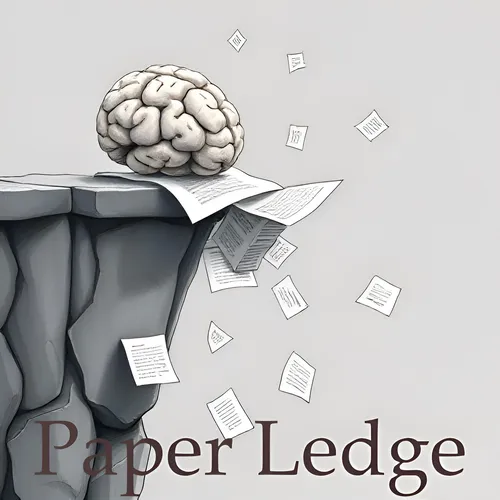Human-Computer Interaction - Foundation Models for Cross-Domain EEG Analysis Application A Survey
- Author
- ernestasposkus
- Published
- Fri 22 Aug 2025
- Episode Link
- https://www.paperledge.com/e/human-computer-interaction-foundation-models-for-cross-domain-eeg-analysis-application-a-survey/
Alright learning crew, Ernis here, ready to dive into another fascinating paper that's shaking things up in the world of brain science and AI! We're talking about electroencephalography, or EEG, which is basically like listening in on the electrical chatter happening inside your brain.
Now, for years, analyzing EEG data has been a pretty complex process. Think of it like trying to understand a symphony orchestra by only listening to one instrument at a time. It's tough to get the big picture! But recently, something called foundation models has come along, and it's like giving us super-powered ears that can hear everything at once.
These foundation models are AI systems trained on massive amounts of data, allowing them to recognize patterns and relationships that humans might miss. They're like the Swiss Army knives of AI, adaptable to different tasks. In the context of EEG, they're helping us decode brain signals in ways we never thought possible.
However, things have been moving so fast that the whole field has become a bit… messy. Imagine a toolbox overflowing with different gadgets, but no clear way to organize them or know which one to use for which job. That's where this paper comes in! It's like a master organizer for the world of EEG foundation models.
The authors have created a taxonomy, which is a fancy word for a system of classification. They've sorted all these different models based on what they're trying to achieve with EEG data. They've broken them down into categories based on what output they produce, like:
- EEG-text: Can we translate brain activity into text? Think about someone with paralysis controlling a computer with their thoughts.
- EEG-vision: Can we reconstruct what someone is seeing just by looking at their brainwaves? Pretty wild, right?
- EEG-audio: Can we understand what someone is listening to or even imagining hearing?
- Multimodal frameworks: Combining EEG with other types of data, like eye-tracking or even video, to get an even richer picture of what's going on in the brain.
The paper doesn't just list these categories; it digs deep into the research ideas, the underlying theories, and the technical innovations behind each one. It's like a guided tour through the cutting edge of EEG analysis!
And crucially, the authors aren't afraid to point out the challenges. They highlight some big questions that still need answering, like:
- Interpretability: Can we actually understand why these models are making the decisions they are? It’s no good if the AI is a black box.
- Cross-domain generalization: Can a model trained on one person's brainwaves work on another person's? Or even on data collected in a different environment?
- Real-world applicability: Can we actually use these models to build practical, helpful tools for people in the real world?
So, why does this paper matter? Well, for researchers, it provides a much-needed framework for understanding and navigating this rapidly evolving field. It helps them see where the gaps are and where to focus their efforts. As the study mentioned, this work...
...not only provides a reference framework for future methodology development but accelerates the translation of EEG foundation models into scalable, interpretable, and online actionable solutions.
But even if you're not a scientist, this research has the potential to impact your life. Imagine a future where:
- Doctors can diagnose neurological disorders earlier and more accurately.
- People with disabilities can communicate and interact with the world in new and powerful ways.
- We can unlock a deeper understanding of consciousness itself.
This paper is a step towards making that future a reality.
Now, a couple of questions I'm left pondering after reading this are: Given the huge variability in human brains, how far away are we from truly personalized EEG-based AI systems? And what ethical considerations do we need to address as we develop these powerful tools for reading and potentially even influencing brain activity?
What do you think, learning crew? Let me know your thoughts in the comments!
Credit to Paper authors: Hongqi Li, Yitong Chen, Yujuan Wang, Weihang Ni, Haodong Zhang
